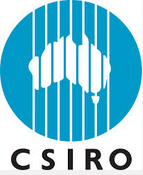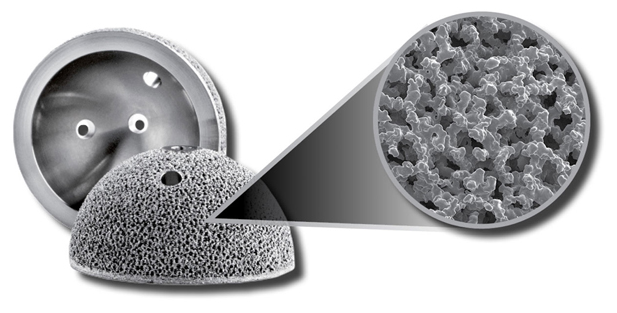 When in comes to desktop 3D printers, prices have plummeted to a point in which almost anyone in the developed world can afford to purchase their own machine. This has enabled hundreds of thousands of individuals and businesses to take advantage of 3D printing technology to an extend which was unimaginable only a few short years ago.
When in comes to desktop 3D printers, prices have plummeted to a point in which almost anyone in the developed world can afford to purchase their own machine. This has enabled hundreds of thousands of individuals and businesses to take advantage of 3D printing technology to an extend which was unimaginable only a few short years ago.
When it comes to printing with metal, however, that’s an entirely different story. Laser sintering machines are not only dangerous for the inexperienced to operate, but such machines are usually priced north of what one would pay for an entire house, putting such use usually out of reach of the typical individual. With that said Australia’s national science agency, the Commonwealth Scientific and Industrial Research Organisation (CSIRO), wants to change all this, at least for Aussies.
Today CSIRO announced the grand opening of Lab 22, a $6 million research center which has been created in order ![]() to accelerate the adoption of industrial scale metal 3D printers in the nation. The printers, purchased from Arcam at a price as high as $1 million a pop, can be used for a number of valuable applications such as the printing of titanium medical implants, intricate, yet strong components for both prototyping and end-use parts, and much more.
to accelerate the adoption of industrial scale metal 3D printers in the nation. The printers, purchased from Arcam at a price as high as $1 million a pop, can be used for a number of valuable applications such as the printing of titanium medical implants, intricate, yet strong components for both prototyping and end-use parts, and much more.
“This advanced equipment is in the range of $1 million per unit, but the vast majority of small and medium-sized businesses don’t have that amount of capital on hand to take a leap of faith on a new or
emerging technology,” CSIRO additive manufacturing research leader, Alex Kingsbury, said in a statement. “We’ve already signed up four industry partners and welcome more companies to get on board.”
Among the companies to sign up is Canberra, Australia-based Made for Me, a startup which has set out to create a localised network of 3D printers which can be used by Australians to print models that they have uploaded at facilities nearby. Made for Me could best be described as a 3D Hubs, confined to the continent of Australia, which offers 3D printing in a wide range of materials such as sandstone, nylon, thermoplastics, aluminum, titanium, gold, silver and bronze.
“We’ve seen that Australian businesses want to find faster, local options for high-quality 3D printing, but have been going overseas for industrial-grade work because it has historically been too difficult to identify suitable local suppliers,” said Made for Me co-founder and CEO, James Antifaev. “Using a local manufacturer from our network can cut turnaround time ihalf for customers, and it keeps more manufacturing business in Australia.”
Time is money in the business world and for companies to have the option to print locally is just one of the many advantages that Australian businesses will realize through Lab 22. Additionally, the lab can allow companies, large and small, to be introduced to 3D printing, allowing them to try out the technology before they reach even deeper into their pockets to perhaps purchase their own machines.
Lab 22 charges a daily access fee to their industry partners, which in this case are passed onto Made for Me’s customers. Regardless, the fees charged by Made for Me pale in comparison to the machine costs and upkeep a company would pay for their own metal 3D printers.
Access and an introduction to this technology at an early stage will be what eventually leads to even further adoption by businesses moving forward. It’s nice to see an ever expanding number of individuals and companies around the globe having the ability to utilize this incredible technlogy. Let us know if you have used Made for Me’s services. Discuss this story in the Lab 22 forum thread on 3DPB.com.
Subscribe to Our Email Newsletter
Stay up-to-date on all the latest news from the 3D printing industry and receive information and offers from third party vendors.
You May Also Like
Profiling a Construction 3D Printing Pioneer: US Army Corps of Engineers’ Megan Kreiger
The world of construction 3D printing is still so new that the true experts can probably be counted on two hands. Among them is Megan Kreiger, Portfolio Manager of Additive...
US Army Corps of Engineers Taps Lincoln Electric & Eaton for Largest 3D Printed US Civil Works Part
The Soo Locks sit on the US-Canadian border, enabling maritime travel between Lake Superior and Lake Huron, from which ships can reach the rest of the Great Lakes. Crafts carrying...
Construction 3D Printing CEO Reflects on Being Female in Construction
Natalie Wadley, CEO of ChangeMaker3D, could hear the words of her daughter sitting next to her resounding in her head. “Mum, MUM, you’ve won!” Wadley had just won the prestigious...
1Print to Commercialize 3D Printed Coastal Resilience Solutions
1Print, a company that specializes in deploying additive construction (AC) for infrastructure projects, has entered an agreement with the University of Miami (UM) to accelerate commercialization of the SEAHIVE shoreline...






























